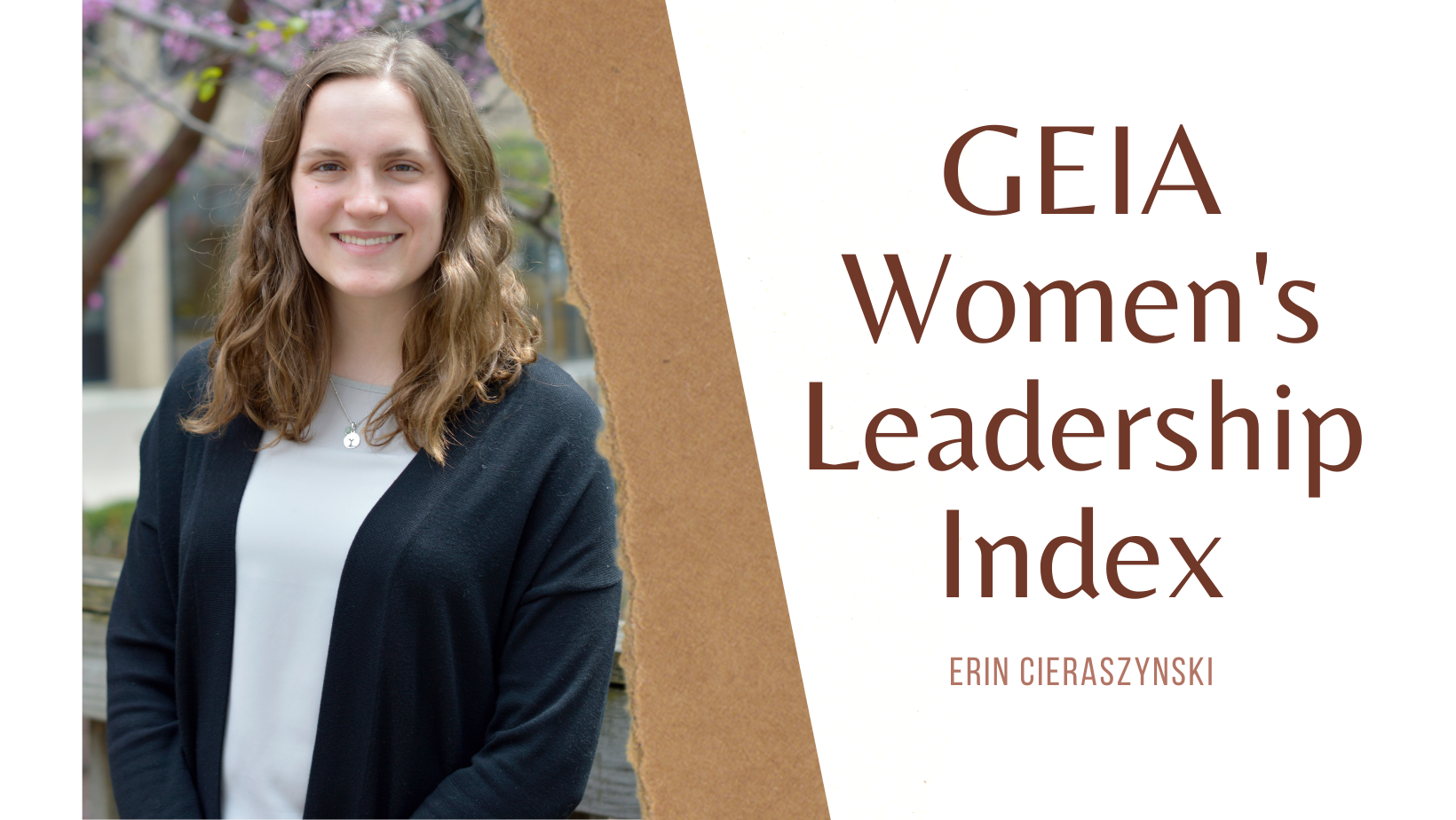Over the past few months, I've had the opportunity to continue my work on the GEIA Women's Leadership Index thanks to the WLP Humphries Fellowship. While my work study experience ended in December 2020 with GEIA, WLP allowed me to participate in the finalization of research updating and official launch of the index. I was able to see my hard work over the past year complete a full circle and hope it can serve the GW community for years to come. Overall, this work is important and fits into WLP’s mission because it is one of the only platforms that combines all of these factors relating to gender equality and produces measurable data to track progress. One of the most important things I learned during my time in WLP was how essential education and academia is to women’s empowerment. I see this element of WLP reflected in the GEIA Women’s Leadership Index project because it allows us to illustrate where women stand all over the world in terms of political power and even more importantly it outlines ways to increase that power.
The launch of the GEIA Women’s Leadership Index (GEIA WLI) at the Elliott School presents an opportunity to expand what we know about women’s positions, power, and pathways to leadership. This compilation of facts and figures identifies specific ways in which a particular country can move towards gender parity compared to where they currently stand. Previously at the Wilson Center as a part of the Women in Public Service Project, the index was revolutionary in the sense that it was the world’s first and most comprehensive data set detailing the status of women in the public service sphere. At the Elliott School, the index carries on this prestige and utility while offering the GW community a chance to get involved.
As a research assistant over the past year, I’ve had the great privilege of working with GEIA Visiting Scholar, Gwen Young, on crafting a unique website for the index and contributing to the data updating process. The initial index was launched at the Wilson Center in 2017 and used data from a combination of sources such as the World Bank, the World Values Survey, the Inter-Parliamentary Union, to name a few. Once the project was revamped at the Elliott School in early 2020, one of the main priorities was making sure it reflected relevant and up to date data. For me, this process involved piecing through each of the 80 plus indicators and tracking to see if there was newer data available. The new data was then uploaded to the site, making the index reflective of the current landscape. Our vision is to replicate this process every few years in order to keep the index as relevant and useful as possible. Along with this data update, the country composite scores will be recalculated and reevaluated to measure each country’s progress over time.
The GEIA Women’s Leadership Index will be a valuable tool for the GW community in both terms of using its findings and contributing to them. The index provides 80 plus indicators all in one place, spanning from the number of women in parliaments across the globe to the average paid maternity leave length in each country. Students and faculty alike can use this collection of data for research purposes in papers, projects, and more. On the other hand, GW students and faculty can also help compile and update this data as new numbers become available. While the index currently has a wide range, there are many other indicators that could be added to it. In a post- pandemic world, tracking women’s access to and power within public service positions will become even more critical. The GW community will be able to help add these new indicators and adapt the index to reflect the global impact of COVID-19. In addition, contributors are invited to share their findings and insights in blogs or reports that live on the index’s site. With the GEIA Women’s Leadership Index as an integral tool that will help the world reach gender parity, we hope GW students and faculty can benefit from and progress the index for years to come. For more information, watch the event launch recording, check out my follow up blog, and check out the index itself here.


